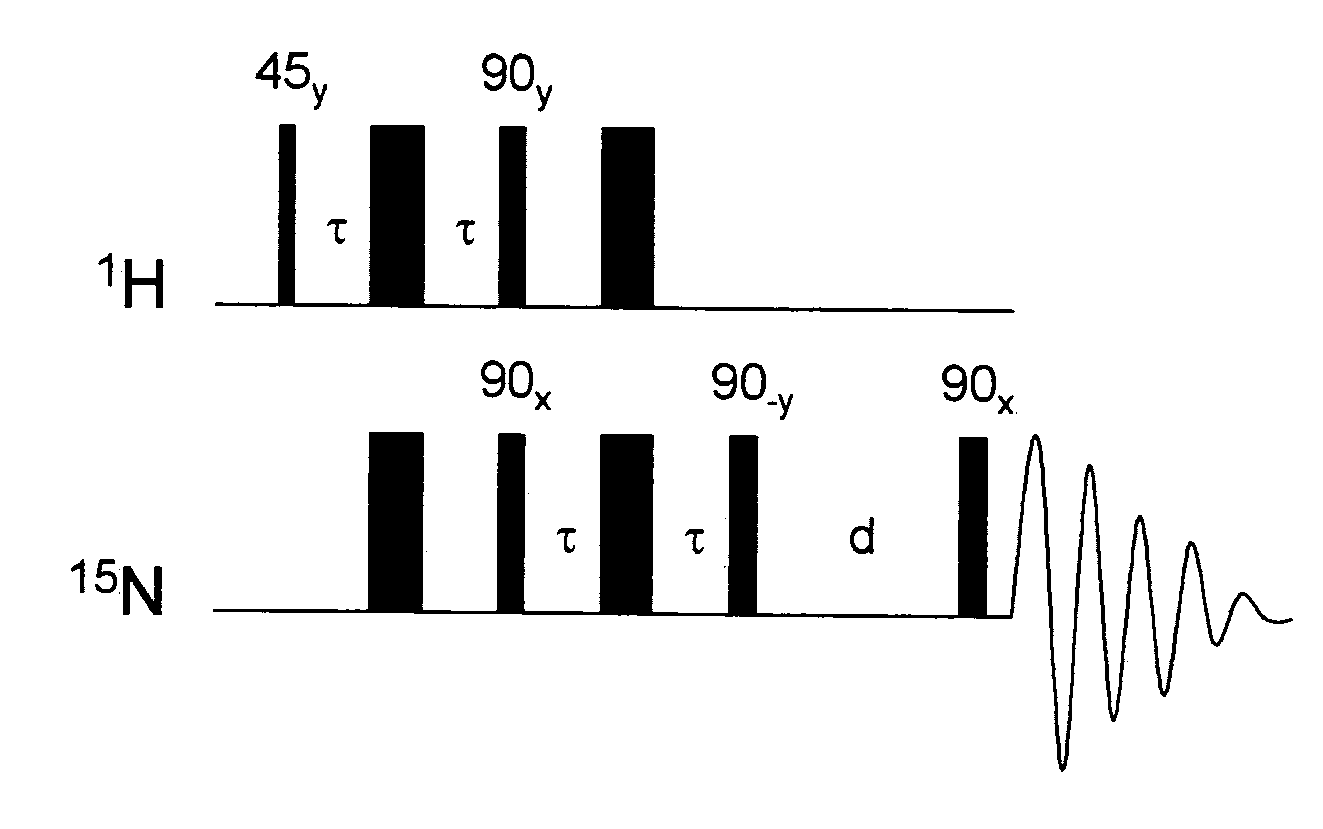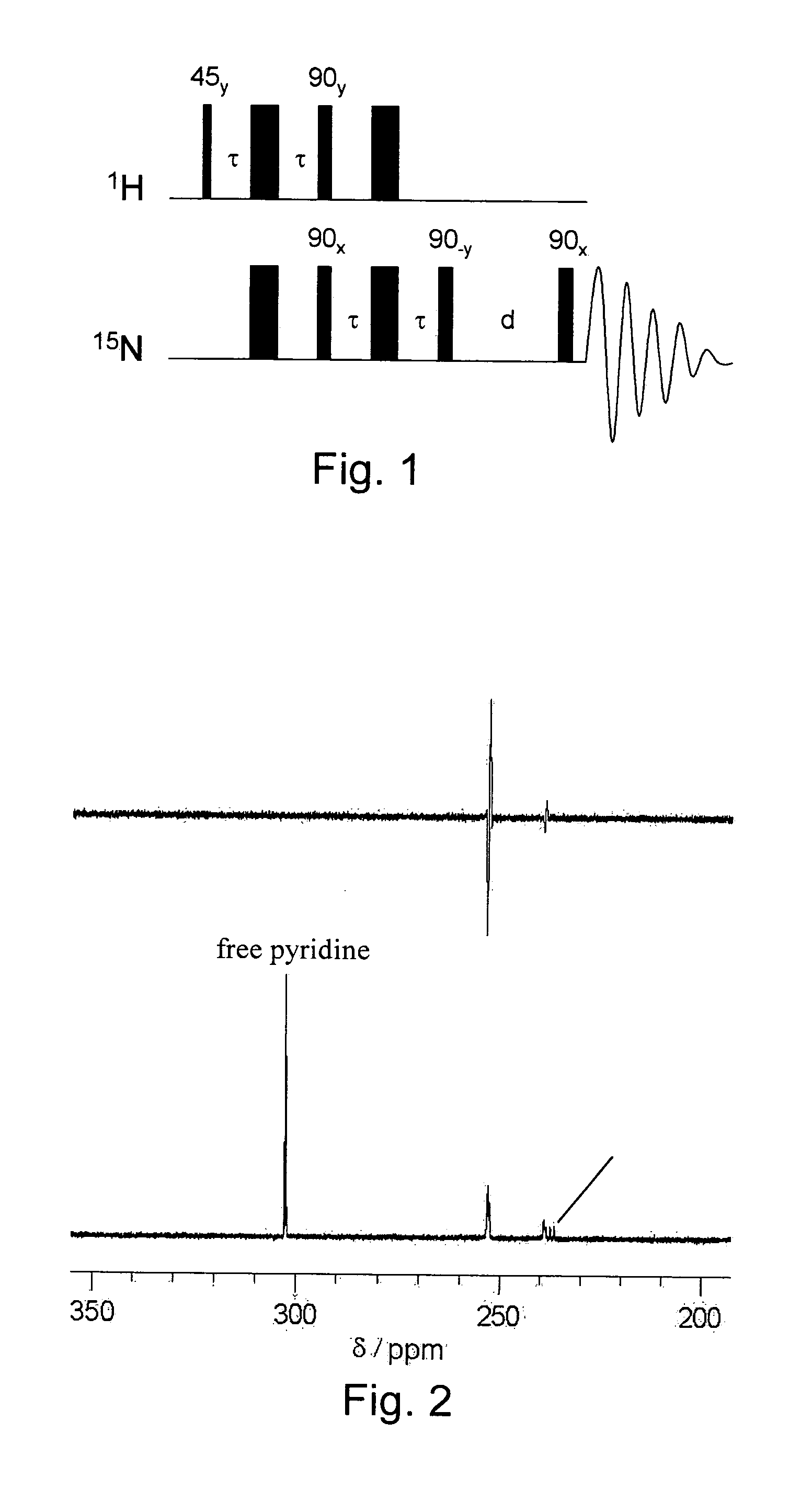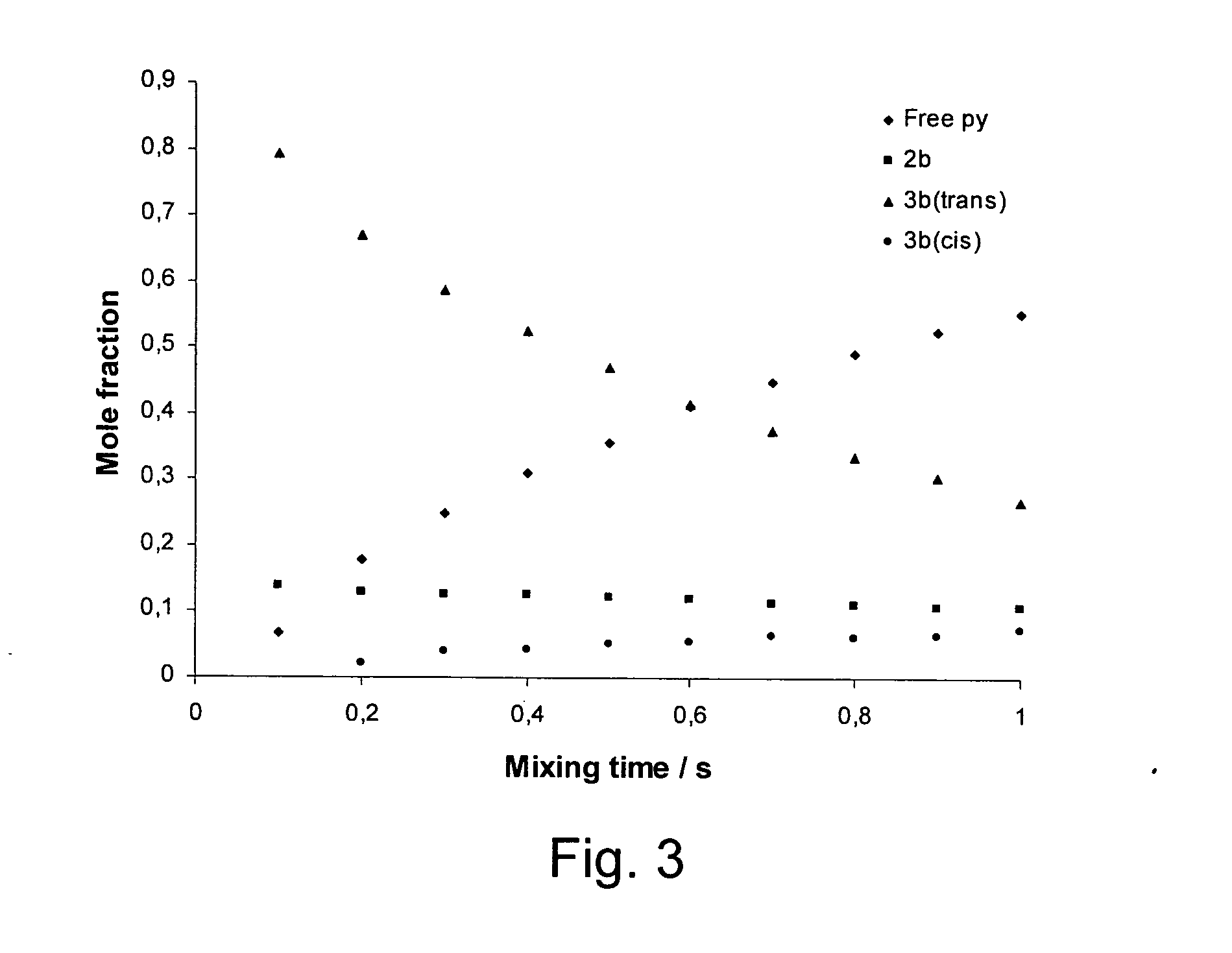Hyperpolaritzation of compounds for nmr, in particular by means of phip
- Summary
- Abstract
- Description
- Claims
- Application Information
AI Technical Summary
Benefits of technology
Problems solved by technology
Method used
Image
Examples
example 2
Polarization Transfer to 15N
[0054]A series of heteronuclear polarization experiments were utilised in order to transfer the enhanced polarization from hydride resonances to the 15N of pyridine using PHIP adapted INEPT and INADAQUATE experiments (Haake et al, J. Am. Chem. Soc., 1996, 118, 8688). These experiments included PH-INEPT, refocused PH-INEPT+, INEPT(+π / 4) and PH-INADAQUATE experiments. When recorded under identical conditions and with the signal to noise of the experiments normalised with respect to the relative signal strength of hydride resonances in 1H spectra recorded immediately before each experiment, it was shown that the most efficient polarization transfer was achieved using the PH-INEPT experiment. The refocused version of this experiment only afforded about a third of the 15N signal intensity, most likely due to transverse relaxation of the 15N signal during the refocusing echo. The INEPT(+π / 4) and PH-INADAQUATE experiments were found to be the least effective.
[00...
example 3
Radio Frequency-Assisted Polarisation Transfer
[0061]1 mg of hydrogenatable complex was dissolved in 500 μL of d4-methanol in an NMR tube fitted with a Young's tap top. Approximately 1 mg of the substrate to be polarised (and 1 to 104 of a sacrificial hydrogen acceptor such as 1-phenylprop-1-yne is added if necessary). The sample was then degassed and pressurised by 3 to 3.5 bar of p-H2. The tube was then shaken to dissolve the gas and transferred into the NMR spectrometer. NMR spectra were then recorded using the PH-INEPT+EXSY sequence (see FIG. 1) over a range of reaction delay times that varied between 50 ms and >1 s (see FIG. 3). PH-INEPT and PH-INEPT+ spectra were also recorded to give control spectra correlating to reaction time t=0 s (see FIG. 2).
[0062]FIG. 2 illustrates spectral traces which confirm that the 15N signal of free pyridine and other suitable ligands were enhanced using this approach. Further, FIG. 2 illustrates RF based magnetization transfer of polarization into...
example 4
Spontaneous Polarisation Transfer
[0063]1 mg of a hydrogenatable complex such as [Ir(COD)(PR3)2]BF4, [Ir(COD)(PR3)(py)]BF4, or [Ir(COD)(py)2]BF4 / PR3 where R is a suitable donor such as Cy, was dissolved in 500 μL of d4-methanol in an NMR tube fitted with a Young's tap top. To this sample was added approximately 1 mg of substrate to be polarised (and 1 to 10 μL of a suitable hydrogen acceptor such as 1-phenylprop-1-yne if necessary). The samples were then degassed and then pressurised to 3 to 3.5 bar with p-H2. The samples were then shaken to dissolve the gas and immediately transferred into the spectrometer. Recording of 1H NMR (or a single scan heteronuclear spectrum, e.g. 13C, 15N) spectra commenced as soon as the sample arrived in the probe head. Under these conditions specific substrate resonances were polarised, as illustrated in FIG. 4.
Procedure for Testing Effectiveness of Phosphine Ligands
[0064]2 mg of [Ir(COD)(py)2]BF4 (COD=1,5-cyclooctadiene, py=pyridine) was dissolved in 5...
PUM
 Login to View More
Login to View More Abstract
Description
Claims
Application Information
 Login to View More
Login to View More - R&D
- Intellectual Property
- Life Sciences
- Materials
- Tech Scout
- Unparalleled Data Quality
- Higher Quality Content
- 60% Fewer Hallucinations
Browse by: Latest US Patents, China's latest patents, Technical Efficacy Thesaurus, Application Domain, Technology Topic, Popular Technical Reports.
© 2025 PatSnap. All rights reserved.Legal|Privacy policy|Modern Slavery Act Transparency Statement|Sitemap|About US| Contact US: help@patsnap.com



